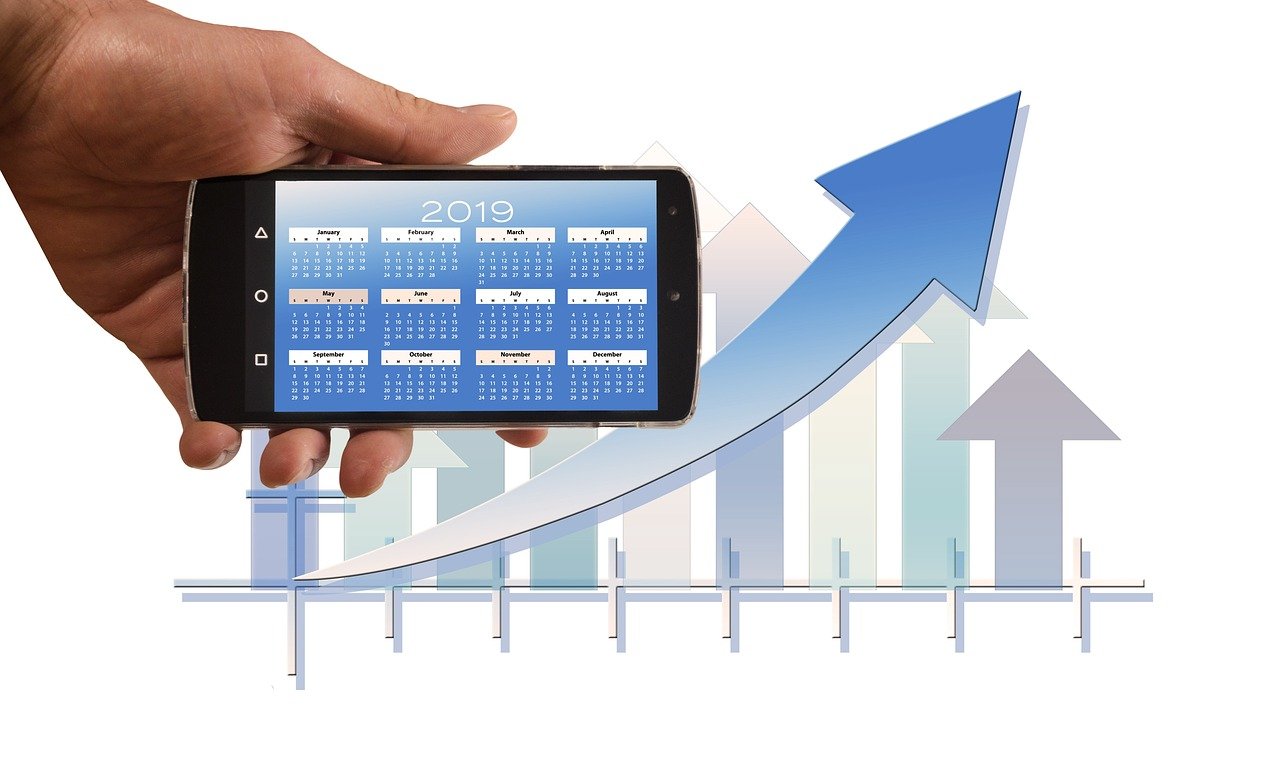Crafting an app used to be the domain of tech giants and coding whizzes. But with advancements in technology and the rise of no-code platforms, app development is now within reach for businesses of all sizes and individuals with a great idea. This guide will walk you through the key considerations and steps involved in bringing your app idea to life, from initial concept to successful launch.
Understanding App Development: A Comprehensive Overview
App development is more than just writing code; it’s a multifaceted process that requires careful planning, design, testing, and marketing. A successful app solves a problem, offers a valuable service, and provides a seamless user experience.
The Two Primary Platforms: iOS vs. Android
Choosing the right platform is a critical first step. Apple’s iOS and Google’s Android dominate the mobile market, each with its own advantages:
- iOS (Apple): Known for its unified ecosystem, higher-spending users, and focus on user experience. Developing for iOS requires knowledge of Swift or Objective-C.
Example: If your target audience primarily uses iPhones and values premium features, iOS might be the better choice.
- Android (Google): The most popular mobile OS worldwide, offering a larger potential audience and greater device flexibility. Android development typically involves Java or Kotlin.
Example: If you’re aiming for mass adoption across a diverse range of devices and user demographics, Android’s wider reach is a significant advantage.
- Cross-Platform Development: Offers the ability to build apps for both iOS and Android from a single codebase using frameworks like React Native, Flutter, or Xamarin.
Example: Startups with limited budgets often opt for cross-platform development to reach both iOS and Android users efficiently.
Benefit: Reduces development time and cost.
Drawback: May not always deliver the same level of native performance.
Native vs. Hybrid vs. Web Apps: Choosing the Right Approach
The type of app you build affects performance, cost, and user experience.
- Native Apps: Built specifically for a single platform (iOS or Android) using the platform’s native languages and tools.
Benefit: Optimal performance, access to all device features, and a native look and feel.
Drawback: Higher development cost and requires separate codebases for each platform.
- Hybrid Apps: Built using web technologies (HTML, CSS, JavaScript) wrapped in a native container.
Benefit: Cross-platform compatibility, faster development, and lower cost.
Drawback: Performance may be slightly lower than native apps, and access to certain device features might be limited. Examples include apps built using Ionic or Cordova.
- Web Apps: Websites that look and function like native apps but run in a web browser.
Benefit: Cross-platform compatibility, no installation required, and relatively easy to develop.
Drawback: Limited access to device features, requires an internet connection, and may not offer the same level of user experience as native apps.
The App Development Process: From Idea to Launch
Successful app development follows a structured process to ensure a high-quality product that meets user needs.
Step 1: Idea Validation and Market Research
Before writing a single line of code, validate your app idea and research your target market.
- Identify the Problem: What problem does your app solve? Who is your target audience?
- Market Research: Analyze your competitors. Are there similar apps? What are their strengths and weaknesses?
- Validate Your Idea: Conduct surveys, interviews, or create a Minimum Viable Product (MVP) to gather feedback and test your assumptions.
Example: A restaurant reservation app idea should be validated by talking to restaurant owners and potential customers to understand their needs and pain points.
- Actionable Takeaway: Don’t fall in love with your idea before validating it with potential users. Their feedback is crucial for success.
Step 2: Planning and Design
The planning and design phase sets the foundation for a user-friendly and effective app.
- Define App Features: List all the essential features your app will offer. Prioritize them based on user needs and business goals.
- Create User Flows: Map out how users will navigate through your app and complete key tasks.
- Wireframing and Prototyping: Create low-fidelity wireframes to visualize the app’s layout and functionality. Develop interactive prototypes to test the user experience. Tools like Figma and Adobe XD are popular choices.
- UI/UX Design: Design the app’s visual interface (UI) and ensure a seamless user experience (UX). Consider factors like color schemes, typography, and navigation.
Example: A well-designed e-commerce app will have clear product categories, a simple checkout process, and an intuitive search function.
- Actionable Takeaway: Invest time in UX research and user testing to ensure your app is easy to use and engaging.
Step 3: Development and Coding
This is where your app idea comes to life through coding and programming.
- Choose a Development Approach: Decide whether to build the app in-house, hire a freelance developer, or outsource to an app development agency.
- Coding and Implementation: Implement the app’s features and functionality based on the design specifications.
- Database Design: Choose a suitable database (e.g., Firebase, AWS, MongoDB) to store and manage app data.
- API Integration: Integrate third-party APIs (e.g., payment gateways, social media logins) to enhance functionality.
Example: Integrating the Google Maps API into a ride-sharing app to display maps and track driver locations.
- Actionable Takeaway: Use version control systems like Git to track changes and collaborate effectively.
Step 4: Testing and Quality Assurance
Thorough testing is essential to identify and fix bugs, ensuring a stable and reliable app.
- Unit Testing: Test individual components of the app to ensure they function correctly.
- Integration Testing: Test how different components of the app interact with each other.
- User Acceptance Testing (UAT): Have real users test the app to gather feedback and identify usability issues.
- Performance Testing: Evaluate the app’s performance under different load conditions to ensure it can handle a large number of users.
- Security Testing: Identify and fix security vulnerabilities to protect user data.
Example: Testing an e-commerce app for vulnerabilities such as SQL injection and cross-site scripting.
- Actionable Takeaway: Don’t skip testing! A buggy app can damage your reputation and lead to negative reviews.
Step 5: Deployment and Launch
Getting your app into the hands of users requires careful planning and execution.
- Prepare App Store Listings: Create compelling app store descriptions, screenshots, and videos.
- Submit App for Review: Submit your app to the Apple App Store or Google Play Store for review.
- Beta Testing: Release your app to a small group of beta testers to gather feedback and identify any remaining issues before the official launch.
- Official Launch: Release your app to the public and start promoting it through various marketing channels.
Example: Using social media ads, influencer marketing, and app store optimization (ASO) to promote your app.
- Actionable Takeaway: Prepare a detailed launch plan that includes marketing activities, customer support, and ongoing maintenance.
Monetization Strategies for Your App
Generating revenue from your app is a crucial aspect of long-term success. Several monetization models are available:
- In-App Purchases: Offer virtual goods, premium features, or subscriptions within the app.
Example: A game selling virtual currency or power-ups.
- Advertising: Display ads within the app.
Example: Banner ads or rewarded video ads.
- Subscription Model: Charge users a recurring fee for access to the app’s features or content.
Example: A streaming service or a productivity app.
- Freemium Model: Offer a basic version of the app for free and charge for premium features or content.
Example: A language learning app offering a limited number of lessons for free and charging for access to advanced courses.
- Paid App: Charge users a one-time fee to download the app.
- Actionable Takeaway: Choose a monetization model that aligns with your app’s value proposition and target audience.
Conclusion
App development is a challenging but rewarding journey. By understanding the key steps involved and following best practices, you can increase your chances of creating a successful app that meets user needs and achieves your business goals. Remember to prioritize user experience, validate your ideas, and iterate based on feedback. Embrace continuous learning and adaptation, and your app can thrive in the ever-evolving mobile landscape.



